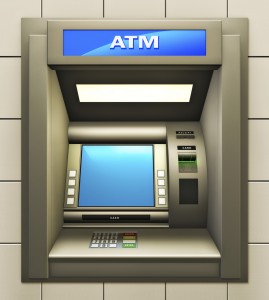
According to the Irish Payment Services Organisation (IPSO), cases of ATM fraud were down 59% in 2012 compared to the previous year.
Last year, 212 incidents were reported, compared to over 500 in 2011. Despite this positive news, some areas are still seeing frequent instances of ATM scamming. Dublin 4 was one of the worst hit in the final quarter of 2012.
A total of 14 ATM’s, located across the postal code, were targeted by scammers employing a technique known as “cash trapping”. A new tool, a “cash claw”, is being utilised by criminals to acquire money “withdrawn” by ATM users. The device is rigged inside the slot where money should be dispensed, grabbing the money before it leaves the machine. With the customer’s card being returned as normal, many fail to realise they have been victimised, assuming no money has left their account. Often victims will attempt a second transaction, only to lose yet more money to the scam. Presuming it to be merely a fault of the ATM, victims rarely report the incident until they next check their account balance.
The “cash claw” first appeared in the U.K and has now become popular across Western Europe, with 15 countries reporting attacks in 2012. According to Financial Fraud U.K, thieves in Britain made over £30 million last year alone by employing the technique.
Last year, in Ireland, “cash trapping” accounted for a total of 89% of the country’s ATM fraud, with the majority of attacks occurring in Dublin. Most of the incidents were reported between the months of September and November. With the “cash claw” invisible to ATM users, it’s difficult to be vigilant, giving it an advantage over more primitive devices.
As technology advances, so do the methods employed by fraudsters. “Contactless” cards, which are being rolled out to bank customers, are now being targeted in a sophisticated scam. These cards employ a technology known as “Radio Frequency Identification” (RFID) which transmits a customer’s bank details through radio waves. Criminals in the U.K have developed a handheld device capable of acquiring the number, name, and expiry date from a credit card. The fraudster simply walks through a crowded area, (the London Underground has been particularly hit), holding the device which scans the details from everyone who walks past with a card on their person. Now, without even removing it from your pocket, your credit card can be targeted.
With criminals employing such stealthy methods, it’s becoming increasingly difficult to protect yourself. You may be targeted without even realising it so it’s advisable to check your account balances daily. If you notice any irregular activity, act immediately.
By Eric Hillis



